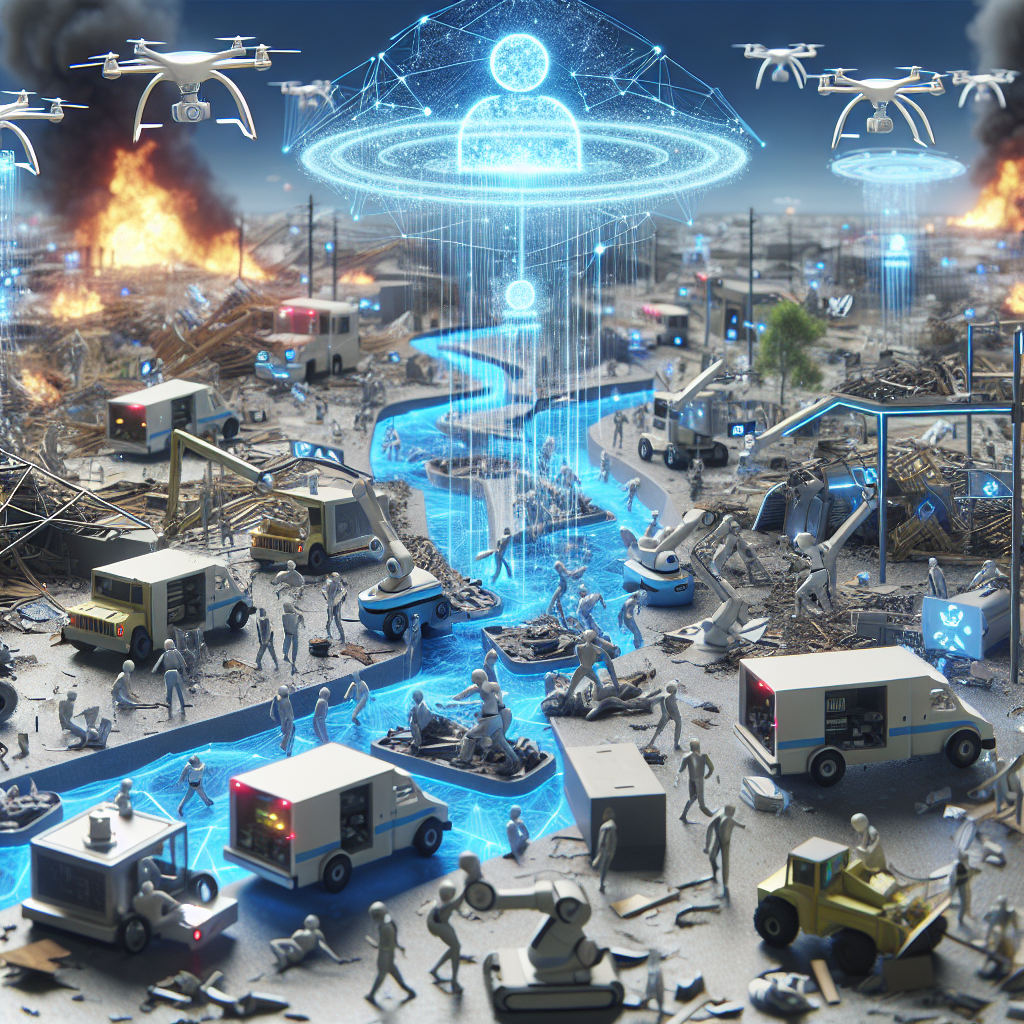Disasters and emergencies can strike at any time, leaving communities devastated and in need of immediate assistance. From natural disasters like hurricanes, earthquakes, and wildfires to man-made emergencies such as terrorist attacks and industrial accidents, the need for effective disaster response and emergency planning is critical. In recent years, the integration of artificial intelligence (AI) driven solutions has played a significant role in improving disaster response efforts and enhancing emergency planning strategies.
AI-driven solutions can be used in a variety of ways to assist in disaster response and emergency planning. From predicting the impact of natural disasters to coordinating rescue operations and managing resources efficiently, AI technology has the potential to revolutionize the way we respond to emergencies. In this article, we will explore the role of AI-driven solutions in disaster response and emergency planning, and how these technologies are making a positive impact on our ability to prepare for and respond to crises.
Predictive Analytics
One of the key ways in which AI-driven solutions are being used in disaster response and emergency planning is through predictive analytics. By analyzing historical data, weather patterns, and other relevant information, AI algorithms can predict the likelihood and impact of future disasters. This information can be used to develop early warning systems, evacuation plans, and resource allocation strategies that can help minimize the impact of disasters on communities.
For example, AI algorithms can analyze satellite imagery and weather data to predict the path of a hurricane and estimate the areas that are most at risk. This information can be used to alert residents in those areas, coordinate evacuation efforts, and allocate resources such as food, water, and medical supplies to the areas that will be most affected. By using AI technology to predict disasters before they happen, emergency responders can be better prepared to respond effectively and save lives.
Resource Management
Another important role that AI-driven solutions play in disaster response and emergency planning is in resource management. During a disaster, it is critical to efficiently allocate resources such as emergency personnel, supplies, and equipment to the areas that need them most. AI technology can help optimize the distribution of resources by analyzing real-time data on the ground, such as the location of emergency calls, the availability of medical facilities, and the status of roads and infrastructure.
For example, AI algorithms can analyze social media posts and other sources of real-time information to identify areas that are in need of assistance. This information can be used to dispatch emergency responders to those areas, coordinate the delivery of supplies, and prioritize rescue efforts based on the severity of the situation. By using AI technology to manage resources more effectively, emergency responders can ensure that help reaches those who need it most in a timely manner.
Response Coordination
In addition to predicting disasters and managing resources, AI-driven solutions are also being used to coordinate response efforts during emergencies. By analyzing data from multiple sources, such as emergency calls, social media posts, and satellite imagery, AI algorithms can provide real-time information on the status of a disaster and help emergency responders make informed decisions about how to best allocate resources and coordinate rescue operations.
For example, AI technology can be used to analyze the location of emergency calls and the availability of nearby emergency personnel to determine the most efficient route for a rescue team to take. This information can be used to optimize response times, minimize delays, and ensure that help reaches those in need as quickly as possible. By using AI technology to coordinate response efforts, emergency responders can work more efficiently and effectively to save lives and minimize the impact of disasters on communities.
FAQs
Q: How does AI technology help predict natural disasters?
A: AI algorithms can analyze historical data, weather patterns, and other relevant information to predict the likelihood and impact of future disasters. This information can be used to develop early warning systems, evacuation plans, and resource allocation strategies to help minimize the impact of disasters on communities.
Q: How does AI technology help manage resources during emergencies?
A: AI technology can help optimize the distribution of resources by analyzing real-time data on the ground, such as the location of emergency calls, the availability of medical facilities, and the status of roads and infrastructure. This information can be used to efficiently allocate emergency personnel, supplies, and equipment to the areas that need them most.
Q: How does AI technology help coordinate response efforts during emergencies?
A: AI algorithms can analyze data from multiple sources, such as emergency calls, social media posts, and satellite imagery, to provide real-time information on the status of a disaster. This information can help emergency responders make informed decisions about how to best allocate resources and coordinate rescue operations to save lives and minimize the impact of disasters on communities.
In conclusion, AI-driven solutions are playing an increasingly important role in disaster response and emergency planning. By predicting disasters, managing resources, and coordinating response efforts more effectively, AI technology is helping emergency responders save lives, protect communities, and minimize the impact of emergencies on society. As the technology continues to advance, we can expect to see even greater improvements in our ability to prepare for and respond to disasters, making our communities safer and more resilient in the face of future crises.

